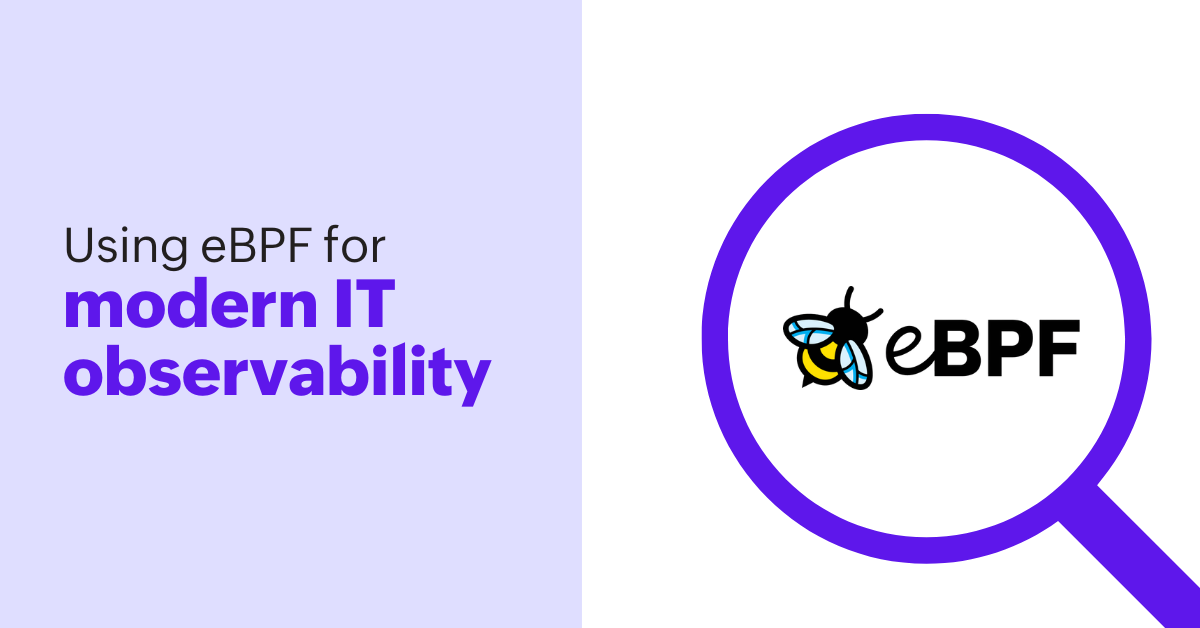Using eBPF for modern IT observability: challenges and opportunities

Monitoring tool sets have usually been assembled as an afterthought by hasty and disparate teams based on ad hoc convenience rather than cohesion. This has led to tool sprawl, blind spots, and escalating operational costs over time. In contrast, modern IT thrives on dynamism, scalability, and continuous delivery with a microservices-oriented approach. It thrives in distributed, heterogeneous, API-driven, and platform-agnostic DevOps cultures that prioritize rapid and frequent product releases.
What is eBPF and its significance?
Today, eBPF is a powerful, widely accepted technology that operates at the kernel level of the operating system. It enables real-time, low-overhead monitoring of system calls, network traffic, and resource usage across applications and containerized deployments. Celebrated system performance expert and author Brendan Gregg once quipped that "eBPF does to Linux what JavaScript does to HTML. (Sort of.)" This blog post went on to emphasize eBPF's path-breaking ability to improve system performance by extending core functionalities inherent in the kernel itself.
eBPF enables detailed telemetry for end-to-end visibility and provides performance tuning, security enforcement, and observability capabilities suitable for modern microservices and Kubernetes infrastructure. Unlike traditional monitoring, which relies on heavy agents, eBPF is light and agile, as it executes programs directly in the kernel. While it was developed for Linux, eBPF underwent significant advancements over the past few years, with growing support for Windows bolstered by projects like eBPF for Windows and widespread adoption in cloud-native ecosystems.
How does eBPF enhance observability?
eBPF has shown a way to achieve in-depth observability at the kernel level, reshaping modern observability. Developers can use eBPF for faster networking, sharper performance tuning, and streaming real-time monitoring data. With custom packet processing, load balancing, and network monitoring achieved directly within the kernel, eBPF reduces latency and improves throughput.
Operating at the kernel level, eBPF minimizes overhead, streamlines processes, and makes it easy to enforce complex rules early in the event's path. This greatly enhances traffic management and prevents loss while ensuring high performance.
Many benefits of using eBPF in cloud-native observability
eBPF offers these benefits in cloud-native observability:
- Comprehensive visibility: eBPF monitors kernel events across all applications, including containerized workloads, providing a complete view of Kubernetes environments.
- Dynamic instrumentation: eBPF allows programs to be loaded or removed from the kernel in real time, enabling adjustments without reboots or process restarts.
- High performance: eBPF programs are just-in-time (JIT) compiled into native machine instructions, filtering events efficiently before they could impact the user space.
- No application changes needed: Modern observability tools use eBPF to efficiently collect and trace real-time application requests directly from within the Linux kernel. This eliminates the need for traditional monitoring methods that have to instrument application code. This convenience makes it ideal for agile, cloud-native setups.
- Avoiding sidecar issues: eBPF reduces latency tied to sidecar models in service meshes and mitigates container management challenges.
- Security observability: eBPF-based security tools can track host traffic to detect and quarantine malicious activities and enforce security rules.
Challenges and concerns
Although eBPF shines with its substantial benefits, it is also important to know some unique IT observability challenges the technology brings.
- Needs expert hands: eBPF's inherent low-level nature demands technical nuance, which requires expert hands to write and manage eBPF programs.
- Tough to debug: Finding and fixing bugs within the kernel environment is challenging, as only a few tools are available.
- Could hog resources: Though inherently efficient, you cannot rule out badly designed eBPF programs from hogging resources and plummeting system performance.
- Tough to maintain: As system kernels evolve, maintaining and updating eBPF programs must keep up with their complexity, demanding continued efforts to keep them compatible, functional, and relevant.
- Still evolving: Though abuzz, eBPF is still a young technology with an evolving community. Its nascent support for Windows could also limit its universal reach.
A seismic shift
eBPF has significantly changed IT observability by addressing the deficiencies of traditional monitoring thanks to its kernel-level precision and adaptability to modern, cloud-native environments. eBPF also wins for its ability to provide real-time insights, enhanced networking, and unified telemetry. Considering the challenges in eBPF and its complexities, careful consideration and skilled management are essential to take IT observability to the next level.